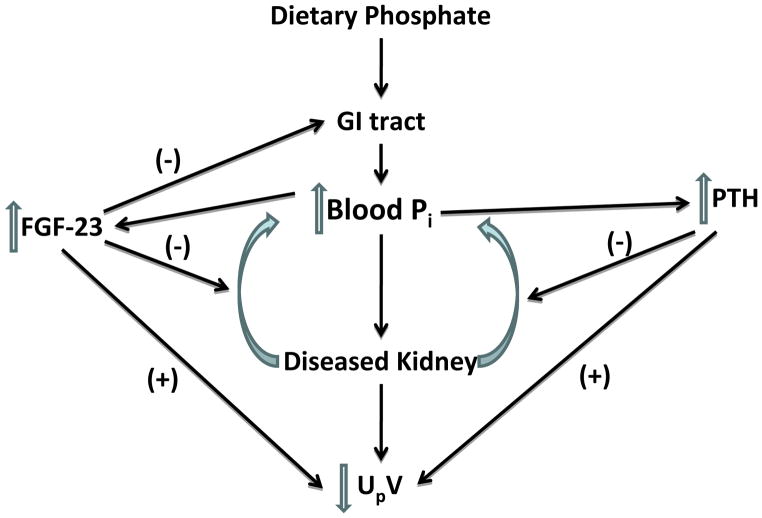Figure 1.
A propose schema of the development of mineral bone disorder in patients with CKD. A diseased kidney is unable to excrete (UPV) absorbed dietary phosphate, resulting in increased serum inorganic phosphate (Pi). This triggers an increase in parathyroid hormone (PTH) and fibroblast growth factor 23 (FGF-23), both of which inhibit renal tubular phosphate absorption, and increase phosphate excretion. In addition, FGF-23 inhibits intestinal phosphate absorption, helping to mitigate the increase in the phosphate burden. Abbreviation: GI, gastrointestinal.

